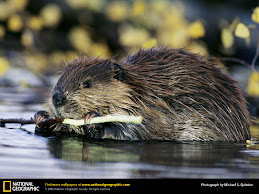 Scientists have long noted that we are in a horrific extinction event with hundreds of species vanishing daily. Daily. Trouble is, that number is based on mathematical models, and is, for many, just a number, a clinically cold number.
Scientists have long noted that we are in a horrific extinction event with hundreds of species vanishing daily. Daily. Trouble is, that number is based on mathematical models, and is, for many, just a number, a clinically cold number.But consider the red knot pictured here—extinction with a face. The knot is a member of the sandpiper clan, a shorebird with one of the longest migration routes on Earth, flying from Tierra del Fuego to the Arctic Circle and back, almost 20,000 miles annually.
And it is vanishing before our very eyes. From 100,000 birds in the 1980s, scientists estimated only 17,200 were left in 2006. The bird was featured in a recent PBS Nature episode, titled, appropriately, “Crash.”
We are eyewitness to extinction—scientists worry the knot may vanish by 2010, two years away.
And what a loss. In migrating north from Argentina, knots gather on the coast of Brazil, then leap into the Atlantic Ocean, flying for several days without landing until they pull up on the Delaware Bay, exhausted, ravenously hungry, bodies depleted. But a miracle happens.
At just this same time, horseshoe crabs haul themselves up onto these same bay beaches, laying what was once a superabundance of green BB-sized eggs in the sand, thousands of crabs laying quadrillions of fat-rich eggs.
In an elegant confluence of events, the knots arrive just as the crabs are laying, and engorge themselves on crab eggs, doubling their body weight in a very short time, preparing themselves for their great leap forward—to the Arctic Circle, for mating and laying their own eggs.
Trouble is, the horseshoes crabs are themselves valuable, used as bait for catching conch and eel, and crab fishermen have been aggressive in protecting the horseshoe crab fishery.
As crab populations themselves crashed in past years, knot populations plummeted.
 There has been tons of attention focused on knots and crabs recently, and while crab populations seem to be rebounding from new rules and changed management, some say they rebounding from historically low levels, and knots are leaving for the Arctic Circle without the fat reserves they need.
There has been tons of attention focused on knots and crabs recently, and while crab populations seem to be rebounding from new rules and changed management, some say they rebounding from historically low levels, and knots are leaving for the Arctic Circle without the fat reserves they need.And are simply not surviving the trip.
But the Atlantic States Marine Fisheries Commission is set to rule on the 2009 Delaware Bay crab harvest, the latest round in a fierce tug of war between the competing interests of commerce and conservation, and a moratorium is not on the table. More likely, they will allow a male-only delayed catch, but conservationists remind us that crabs need multiple male partners to fertilize all their eggs (the photo here shows a female surrounded by male suitors, all likely contributing sperm to the externally fertilized eggs). And crabs don’t become egg layers until the age of 10—lots of young crabs in the water now may not help the knot.
Conservation vs. commerce. Sound familiar? Whenever experts declare there should be a balance between the two interests, that usually means conservation loses.
The red knot is vanishing, right in front of us. And for what?
Eel bait.
Maya Van Rossum, the Delaware Bay's Riverkeeper, says "the whole world is watching" what happens here. That would be great—I fear not enough of the world is watching, and the knot is slipping through our fingers.
It bears repeating: for eel bait.


No comments:
Post a Comment